


|
EL-KURRU (right bank of the Nile) This cemetery, excavated by Reisner, is located some 15 km to the south-west of Jebel Barkal. It is the place where the first rulers of Napata, known as the Black Pharaohs, were buried. They sat on the Egyptian throne throughout the XXV Dynasty. From Alara (ca. 785-760 BC), probably buried in tomb Ku 9, to Tanwetamani (664-656 BC) buried in tomb Ku16, with the exception of the problematic burial of Taharqo, the XXV Dynasty is represented. The burials, among them those of Kashta (Ku 8), Piye (Ku 17) and Shabaqo (Ku 15) show Egyptian influences. The rock-cut graves are hypogea (long corridors that penetrate the ground). On the exterior, the bases of pyramidal structures with funerary chapels can barely be made out. Inside, the paintings follow Egyptianising decoration schemes with a starred ceiling, depictions of Isis and Nephtys, protective genies, or the sons of Horus. The hieroglyphic texts are of Egyptian manufacture.
Among these barely visible ruins two graves are open to visitors: that of Tanwetamani (Ku 16) and of his mother, the queen Qalhata (Ku 5). They are equipped with a descendary (hypogeum stairs) that leads to an antechamber and to the funerary chamber.
In the antechamber of Tanwetamani, the goddesses Isis and Nephtys present the red bands (pertaining to the mummification process). On the walls, the ruler is led by the sons of Horus. These are four in number: Imsety with a human head, Qebehsenuef with a falcon head, monkey-headed Hapy and Duamutef with a canine head, and are associated with the vases intended to contain the entrails of the dead person. The king wears the Kushite cap decorated with two raised cobras symbolising Egypt and the Land of the Cataracts. At the far end of the funerary chamber, on the upper register, is the 'adoration of the sun barque by the baboons'.
In the antechamber of Qalhata, the queen is accompanied by the sons of Horus, wears a long robe whose cuffs are decorated by bands of colours. She wears a vulture headdress, which links her to the goddess Mut. The funerary chamber relates the ceremony of the up-ro, (symbolic opening of the five senses). In a 'sphinx' position, Qalhata rests on a bed in the shape of a lion under which are arranged bows, arrows, lances and shields. Above, an inscription describes this ritual that consisted of seventy-five steps. The main act consisted in touching the seven openings of the head of the dead, so that she might be re-born in the after-life. |
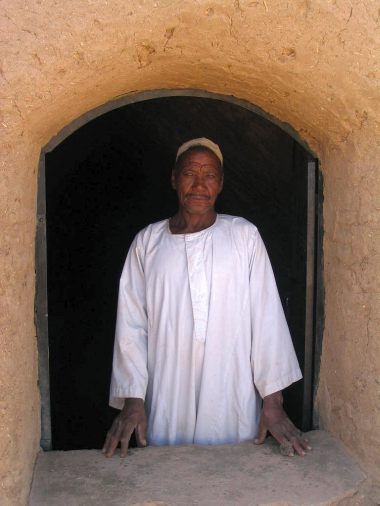 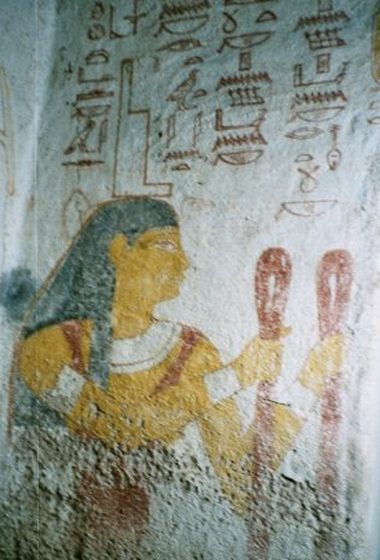 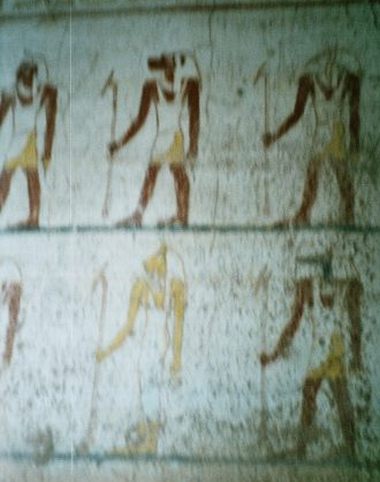  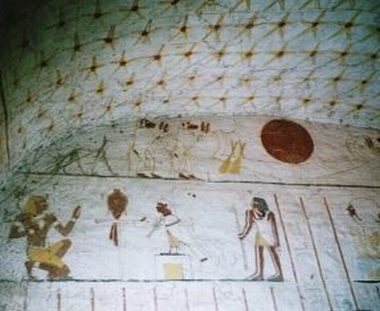 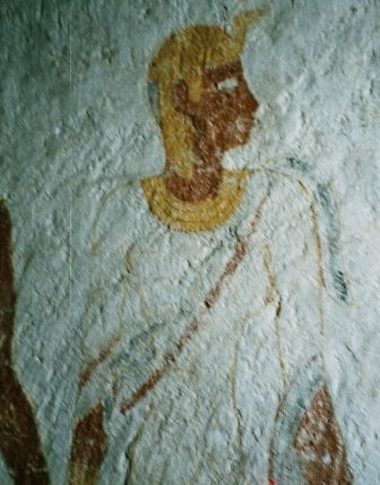  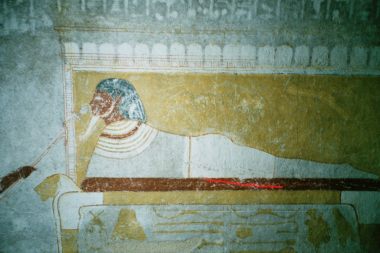 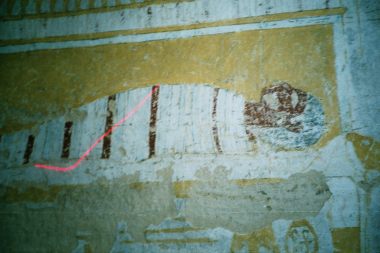 Entrance of the stairs leading to the funeral chamber of Tanouetamani's grave of the 25th dynasty cemetery at El-Kurru / Entrée de la descenderie menant à la chambre funéraire de la tombe de Tanouétamani dans la nécropole de la 25e dynastie à El-Kurru
At the entrance of the funeral chamber, Isis presents the red wrappings for the mummification of the king Tanouetamani / A l'entrée de la chambre funéraire, Isis présente les bandelettes rouges pour la momification du roi (tombe de Tanouétamani)
Protector gods theory usually seen on the viscera vases (Tanouetamani's grave) / Théorie de génies protecteurs que l'on retrouve dans l'iconographie des vases à viscères (tombe de Tanouétamani)
The king Tanouetamani wearing the beard of his deification / Le roi Tanouétamani portant la barbe de sa divinisation
The vault of heaven of Tanouetamani's funeral chamber reminds the gods world where the king has gone. On one wall, two registers present the adoration of the sun god Ra by the baboons and Tatouetamani in front of the Ba bird / La voûte étoilée de la chambre funéraire de Tanouétamani évoque le monde divin vers lequel le roi s'est acheminé. Sur une paroi, deux registres présentent l'adoration par les babouins du dieu soleil Râ et Tanouétamani devant l'oiseau Ba
Queen Qalhata's painting in her grave at El-Kurru / Représentation de la reine Qalhata dans sa tombe à El-Kurru
The opening mouth ritual giving life to the queen Qalhata (Qalhalta's grave at El-Kurru) / Représentation de la reine Qalhata subissant le rituel de l'ouverture de la bouche (tombe de Qalhata à El-Kurru)
The queen Qalhata on her funeral bed receiving the opening mouth ritual (Qalhata's grave at El-Kurru) / La reine Qalhata sur son lit funéraire recevant le rituel de l'ouverture de la bouche (tombe de Qalhata à El-Kurru)
Queen Qalhata's mummy painting (Qalhata's grave at El-Kurru) / Représentation de la momie de la reine Qalhata (tombe de Qalhata à El-Kurru)
|